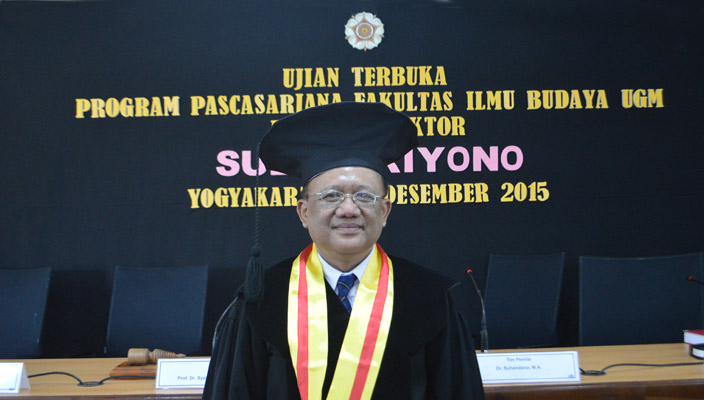
Language and society are reciprocal. The development of language is affected by society dynamics, likewise the development of society is affected by the language development. Deutsch and Bahasa Indonesia keep evolving along with the speakers.
Drs. Sulis Triyono, M.Pd., lecturer of German Language Department, Faculty of Language and Arts of Universitas Negeri Yogyakarta, said that both German Language and Bahasa Indonesia have lingual form that can be used to identify gender of the the words like in any other languages. On both languages, lingual form of gender inflections is identified by many linguistic aspects such as morphology, syntax, and lexicon.
“The lingual form of gender inflections on German Language and Bahasa Indonesia is based on grammatical gender,” he explained on Tuesday (12/29) at his open dissertation defense in Faculty of Cultural Science UGM.
Defending his dissertation entitled Lingual Unit of Gender Inflections on Deutsch and Bahasa Indonesia, Sulis took some examples on morphology level, while in German Language they use {-?as masculine inflections and {-?? as feminine inflections, in Bahasa Indonesia they use {-a} as masculine inflections and {-i} as feminine inflections.
Both German Language and Bahasa Indonesia have some similarities on lingual form. Gender inflection on both languages come from the absorption of foreign language. It was signed by morpheme on penultimate position. Those morphemes can differ kinds of gender.
“In German Language, there are at least three genders, which are masculine, feminine and neutral. In Bahasa Indonesia there are two genders which are masculine and feminine,” he explained.
Sulis added that all nouns in German Language has gender inflection while in Bahasa Indonesia does not have gender inflection.


